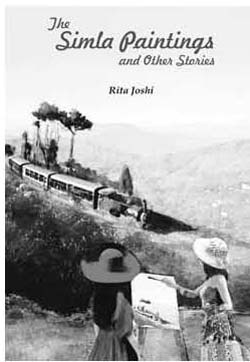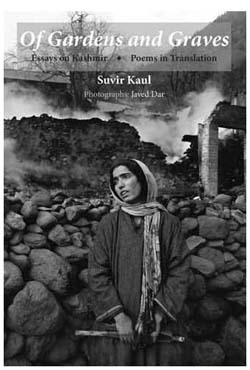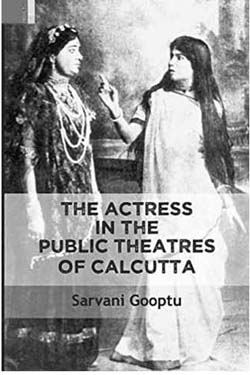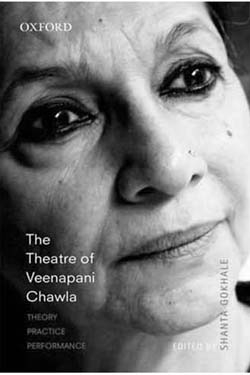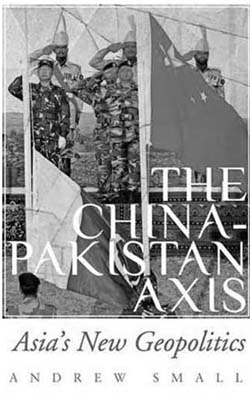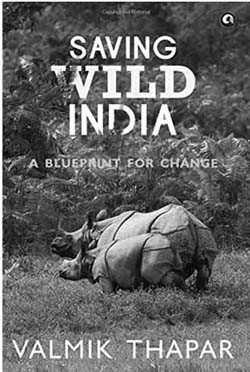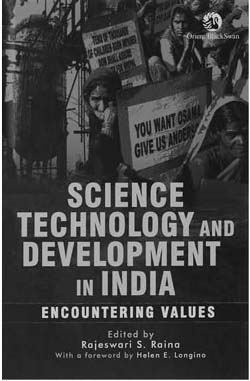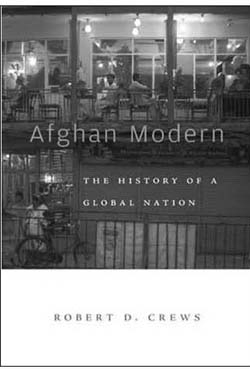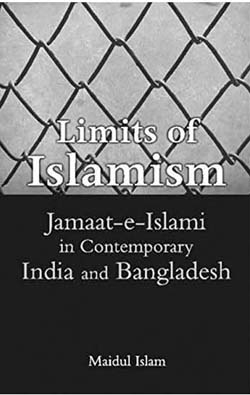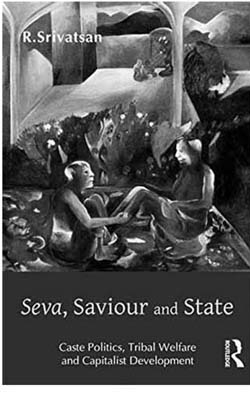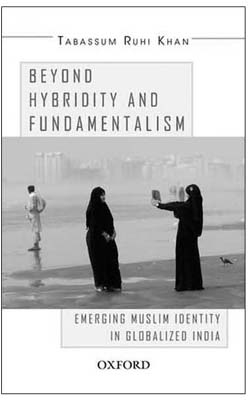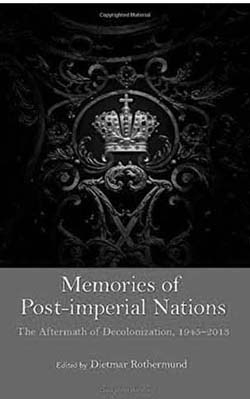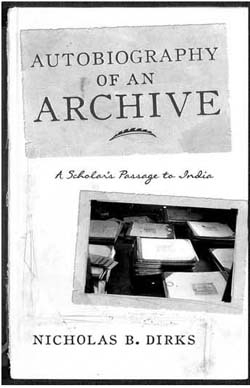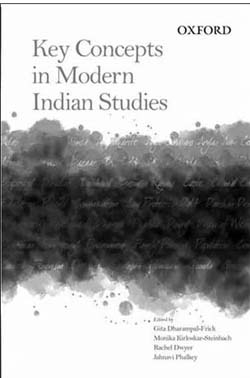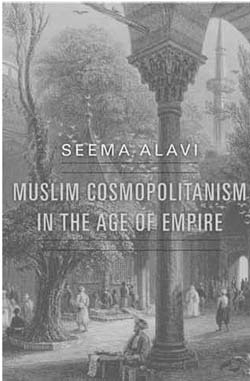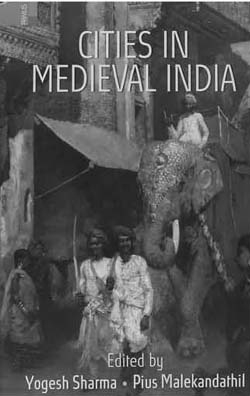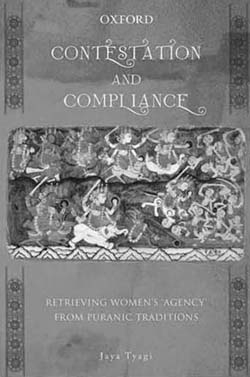wo young women in creative collaboration, looking at a train winding its way through the hills and immortalizing this moment on canvas—all the symbols on this cover—the blue sky, the hills in the distance, the misty horizon, the train, the sparse vegetation, the canvas and brush and the two female figures—signal the literary intention of the writer. She has set out, in the six short stories in this collection, to decode the lives of women as they negotiate their lives and search for meaning and identity.
Archives
October 2015 . VOLUME 39, NUMBER 10Having been close to Khushwant and hearing countless stories firsthand, reading the book made me feel as though I am sitting by him, listening to him recount his impression of ideas, people and places. He remains the best raconteur I knew, and will probably never meet anyone better.
The Spinner’s Tale is a confusing title for this book. The Making of a Jehadi would have been a more apt title for it. It begins with an improbable scene.
Walt Whitman, the American poet, essayist and humanist, had famously declared, ‘Do I contradict myself? Very well, then I contradict myself, I am large, I contain multitudes.
In 1989–90, an Islamist insurgency broke out in the Kashmir Valley. This was a time when much else was happening around the world. The mighty Soviet Russia had taken a beating in Afghanistan.
Books on actresses working in the public theatres in India are a rarity and in that sense Sarvani Gooptu’s The Actress in the Public Theatres of Calcutta is a bit of a novelty. It begins with a premise of tracing the journey of women and their engagement with early theatrical practices in Calcutta.
The Theatre of Veenapani Chawla: Theory Practice Performance is a timely book in more ways than one. It is tragically timely in that it appeared just a few months before Veenapani’s sudden death shocked us all in late 2014. Veenapani Chawla’s practice has, it seems to me, remained almost neglected.
Madhuparna Roychowdhury’s work is a significant addition to the historiography on museums and art history in India. In recent years, one of the major as well as the deeply thought-provoking interventions in this field has been Tapati GuhaThakurta’s Monuments, Objects, Histories. Guha-Thakurta has convincingly argued how the history of museums…
The author accepts as a logical base Hindu India and Muslim Pakistan to read the genesis of modern art in the Indian subcontinent, in the book under review.
An anthology is like an Indian thali—it serves small portions of different things, a couple of staples, and by providing a representative sample it facilitates further explorations. Like a thali too, it has something that appeals to everyone, but it is equally true that inclusion and exclusions usually fail to satisfy everyone who partakes of it.
Wildlife, forests and natural resources in India have never before been under such a concerted threat of obliteration, as they are now, under a regime that is as keen on overexploiting them as they are cavalier towards the intrinsic value of the environment to human survival.
Elephants and Kings is a thorough survey of where war elephants came from, where they went, and where they did not go. It clearly and competently addresses major reasons why war elephants were trained and why they were adopted by some kingdoms and not others. Given its topical coverage and wide chronological and geographical scope, it is a natural companion to Thomas T. Allsen’s Royal Hunt in Eurasian History…
Today, in the middle of the second decade of the 21st century, it is nearly impossible to not hear something or the other about China every day. To realize that China was just a sleeping country with secondary if not tertiary impact on the world economy just three decades back is beyond belief for the new generation.
Science and technology are often understood as socially disembodied and outside the cultural domain of values, although this view has been criticized by scholars working in the field of Science, Technology and Society (STS) Studies since the 1970s, and the scholarly endeavours resonated well with the civil society critique of the epistemology of modern science and the moral universe S&T was embedded in.
2015
Thanks, perhaps to the Himalayas, India has largely had a westwards ori-entation. Or to be a bit more accurate, the West has always looked towards India, from the time of Alexander the Great. Neither statement is fully true but it does tell us how India’s links with the East have never been quite as deep as with the region to the West of India. Historically the only link that India had with the East was through Buddhism. In a large measure, conquest has been the reason for this orientation.
Colonisation: A Comparative Study of India and Korea edited by eminent scholars Vyjayanti Raghavan and R. Mahalakshmi is a timely study of the colonial experiences of the Indian subcontinent and the Korean Peninsula.
The visit by the Chinese President Xi Jinping to Pakistan in April 2015 saw repeated references to some clichéd phrases describing Sino-Pak relationship, like ‘all weather friendship’. Some new linguistic coinage emerged, such as, ‘visiting brother’s home’ and, ‘security for one as stability for the other’.
For an accurate, quick, synoptic as well as visual history of Russia, there could not have been a better book than Ian Barnes’s Historical Atlas of Russia. Barnes explains the diversity and complexity of Russia from the origins of Russian statehood to the contemporary Russian Federation under the Putin regime with all its pluralities and enigmas. Critics might question such a work for being unable to do justice to such a long period.
Robert Crews of Stanford University’s Department of History has penned an unusual narrative about Afghanistan, dispelling the negative portrayals of it—as an anachronistic, unchanging, primitive, and ethnically divided ‘graveyard of empires.’ From a rugged, variegated transit territory, it was cobbled into a country two and a half centuries ago.
The very divergent political evolution of the Indian and Pakistani armed forces has long puzzled political analysts. Why has the Indian Army turned its back on domestic politics, while the Pakistan Army has directly ruled the country for extended periods and controls its national security policy? Why do the two Armies, cut from the same cloth, behave so differently?
While I was in the midst of reading this book, repetition of a gruesome incident in neighbouring country, Bangladesh, shook me up.
Insurgencies, by definition, signify organized violence waged for a specific political end. Insurgencies are waged within a defined territory, aspire to represent a social base, and portray themselves as enjoying legitimacy from their host population.
The book Uniform Civil Code for India by Shimon Shetreet and Hiram E. Chodosh provides a comprehensive blueprint for alternative frameworks and courses of action, based on lessons from a comparative context of three nations.
Asian economic transformation has been underway despite the hiccups of the 2008 crisis that nearly brought the world economy to a standstill. Asia, at least that part of Asia spanning from India to Japan, now has dynamic leaders in Xi Jinping, Shinzo Abe and Narendra Modi, who are highly nationalist on one hand but also fairly pragmatic as seen in the last couple of years.
R. Srivatsan’s theoretical intervention through his recent book, Seva, Saviour and State: Caste Politics, Tribal Welfare and Capitalist Development is about the politics articulated within the concept and practice of seva—politics of caste, politics of Hindutva, politics of secularism, politics of nationalism and politics of development.
Books can often be likened to cricket matches. A T20 game is light and frothy. The results come in a single setting. A test match is leisurely. You need to invest both time and energy, but at the end, more often than not, it is far more pleasurable as your sense of participation and involvement is far greater.
This is an interesting and timely book on the Muslim dominated area of Jamia Nagar that has mushroomed around the Jamia Millia Islamia University campus. The author Tabassum Ruhi Khan has been closely associated with the Jamia University as a student of the University’s well-known Mass Communications Research Centre (MCRC).
In her remarkable work, Secluded Scholars: Women’s Education and Muslim Social Reform in Colonial India (Oxford University Press, 1999), Gail Minault speaks of the ‘daughters of reform’ who contributed in multiple ways to the social and political movements in India, more than most acknowledged earlier.
‘How does a former colonial power deal with its colonial past, generations after the loss of empire?’ The opening line of Gert Oostindie’s piece in this book sums up the underlying theme of this work which is essentially a comparative study on the aftermath of Decolonization in the West, the way decolonization was memorialized and the subtle shifts in memorializing.
This archives’ role in the subsequent writings on Indian history and historiography are valuable. In another essay, ‘The Policing of Tradition’, Dirks shows how the category of ‘brahman’ was defined by a variety of interventions by colonial authorities. His work is also valuable as a comment by a serious historian on the historiography of India as well.
In the past year there have been two interesting events that made me recall the seminal work of Nicholas B. Dirks: Castes of Mind: Colonialism and the Making of Modern India (Princeton, 2001). The first event was the social and educational survey conducted in Karnataka in April 2015 that recorded caste.
This is a reprint of a work originally published a century ago (Stanley Paul, London, 1913; Dodd, Mead, New York, 1914). Although it has been published as part of the National Archives of India (NAI) series ‘Archives in India: Historical Reprints’, it does not seem to have had any direct or indirect connection with the NAI.
The book under review is the published product of a series of Conference panels and workshops that were organized between 2011 and 2013 in Honolulu, Nottingham, and Bergen. The introduction ‘Reconceptualizing Subaltern Politics in Contemporary India’ begins with a section called ‘What is Subaltern Politics?’ Nilsen and Roy’s definition of ‘subaltern politics’ as ‘the political activity of social groups who are adversely incorporated into determinate power relations’ broadens the term ‘subaltern’.
The present volume calls to mind A Dictionary of Modern Indian History: 1707–1947 by Parshotam Mehra, also published by the Oxford University Press in 1985 (revised edition in 1987), a book that some of us would have profitably consulted as students.
A feature of scholarship on Muslims and Islam in South Asia until recently was that it tended not to explore their connections beyond the subcontinent. The British as historians, though not as rulers, established this tendency.
Cities in Medieval India, a voluminous anthology, is an outcome of academic discussions on the theme of urbanization in premodern India at two separate colloquia held at the Centre for Historical Studies, Jawaharlal Nehru University, New Delhi between March 2008 and March 2009.
The title of the book immediately raised a question in my mind: how much new information on the maritime trade and ports of Gujarat would be available now, about three decades after the path-breaking work by Das Gupta, Pearson and other historians, and later, by Lakshmi Subramanian? As if in anticipation of this query, Hasmukh Shah…
The editors of Irreverent History begin the preface by stating that ‘the present work celebrates the life and scholarship of Professor Muttayil Govindamenon Sankara Narayanan’. Indeed one of the most celebrated historians of India is offered a bouquet of sixteen essays by scholars, many of them his students.
Inter-Asian connections and linkages have a long and fascinating history, and an equally fascinating historiography. The southeast Asian connections, in particular, have received much attention, having been examined through a variety of prisms, ranging from the ‘Greater India’ idea of the early decades of the 20th century, to Sheldon Pollock’s hypothesis of the ‘Sanskrit cosmopolis’ of the beginning of this century.
George Michell is a Professorial Fellow at the School of Architecture in Melbourne. He has dedicated the major part of his academic career to look at architecture in the medieval Indian context and more specifically at temple architecture.
The essays in this volume try to get behind the apparent continuity of normative discourse on the household in India from the ancient to the early modern. They try to locate moments of disruption, transformation or critique, in texts that are often read as simple reiterations of the Manusmriti through the ages.
People perform various auspicious ceremonies on the occasions of illness, the weddings of sons and daughters, the births of children and the setting out on journeys. On these and similar occasions, people perform many auspicious ceremonies. And on such occasions, the womenfolk in particular perform many and diverse ceremonies which are trivial…
The Mauryan Emperor Ashoka has attracted the attention of scholars and laypersons with access to formal education for nearly two centuries since his ‘rediscovery’ in the 1830s. Nayanjot Lahiri’s work is the latest in a long, rich and diverse series of biographies of the ruler. It is significant as being the first major reassessment of Ashoka by a historian of ancient India…

